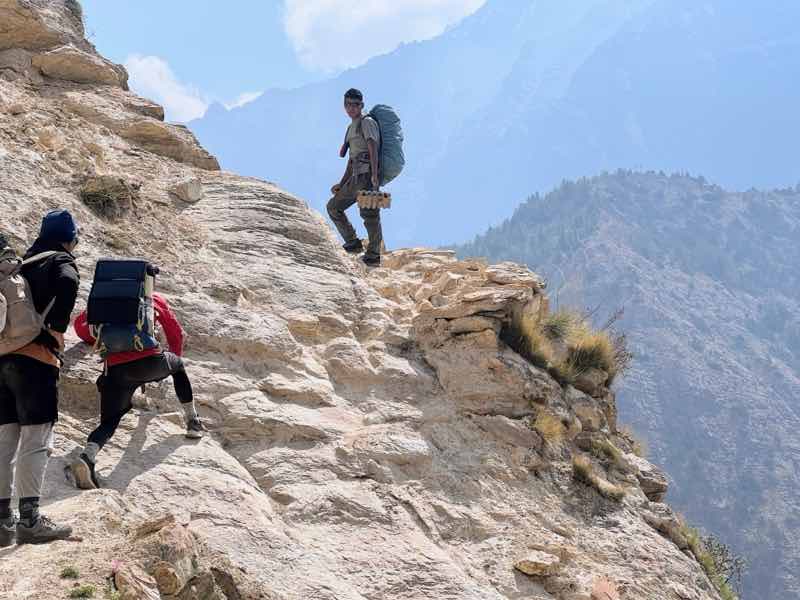
passing Nangdalo La Pass
As I stood at the bustling airport in Kathmandu, my heart beat with anticipation. The air was thick with aromatic spices and the sounds of laughter and chatter, but my mind was on the adventure ahead, Upper Dolpo Trek. This was not going to be another trek; this was a journey into the very heart of one of Nepal’s most remote and mystical regions. I envisioned breathtaking scenery, the spirit of the culture, and the spiritual encounters awaiting me.
As each minute ticked by, my excitement grew. I could already envision myself walking through ancient villages, crossing high mountain passes, and gazing at the stunning turquoise waters of Phoksundo Lake.
The mere idea of being able to dip myself in the value-imbued lifestyle of the locals gave me great pleasure. In this background, however, I was a little apprehensive: would I be up to the tasks set before me? Was I going to find the energy to plow through when my feet and muscles ached?
These questions floated in my mind, but I couldn’t resist the charm of this adventure. It was an opportunity to break out of my routine and venture into the ‘unknown,’ which is part of the reason I make longer-lasting memories. The more significant truth was that this trip would test my body and even alter my outlook on life.

crossing a waterfall in Dolpo trek
Itinerary of Upper Dolpo Trek
- Day 1: Arrival in Kathmandu
- Day 2: Kathmandu Tour & Trek Preparation
- Day 3: Fly to Nepalgunj
- Day 4: Fly to Juphal & Trek to Dunai
- Day 5: Trek to Ankhe
- Day 6: Trek to Sulighat
- Day 7: Trek to Phoksundo Lake
- Day 8: Rest at Phoksundo Lake & Explore Around
- Day 9: Trek to Phoksundo Khola / Sallaghari
- Day 10: Trek to Phoksundo Bhanjyang
- Day 11: Trek to Shey Gompa Village via Kang-La Pass
- Day 12: Acclimatization and Exploration around Shey Gompa.
- Day 13: Trek to Namduna Gaon via Saldang La
- Day 14: Trek to Saldang
- Day 15: Hike to Yangze Gompa & Back to Saldang
- Day 16: Trek to Sibu
- Day 17: Trek to Jeng-La Phedi
- Day 18: Trek to Tokyu Gaon via Jeng La Pass
- Day 19: Trek to Dho Tarap
- Day 20: Rest & Exploration Day at Dho Tarap
- Day 21: Trek to Tarap Khola (Kamakharka)
- Day 22: Trek to Khanigaon
- Day 23: Trek to Tarakot
- Day 24: Trek to Dunai
- Day 25: Trek to Juphal
- Day 26: Fly Juphal-Nepalgunj-Kathmandu
- Day 27: Final Departure from Kathmandu
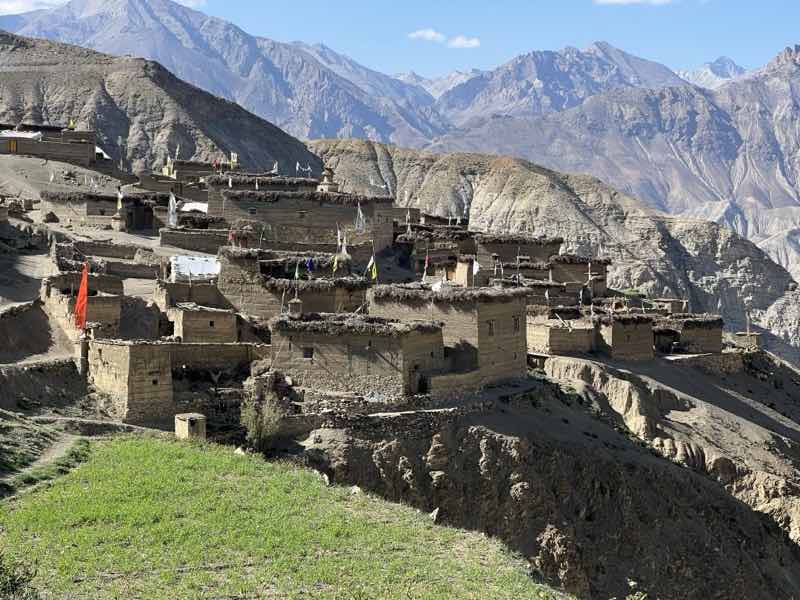
isolated village in Upper Dolpo
Before starting the trek
I felt excitement run high as I negotiated the vibrant streets of Kathmandu before I began my trek to Upper Dolpo. The city’s colors and sounds seemed almost palpable, like a kaleidoscope in which energies seemed to be injected deep within my spirit.
I spent my first day immersed in the rich culture, scanning through the ancient temples and bustling markets, feeling the weight of anticipation grow inside me with every passing moment. This city seemed to be a prelude to the adventure that awaited.
Gearing up for the trek, I meticulously checked my gear and ensured I was fully equipped for the journey ahead. Packing my backpack sent thrills down my spine, creating vivid scenarios of me trekking through remote villages, crossing high mountain passes, and coming across breathtaking landscapes. Well aware that this was a place so rich in history and nature, my heart raced.
First, meeting my trek team elevated my excitement. Their enthusiasm was contagious, and we shared stories and laughter, bonding over our shared goal. The camaraderie formed in those early moments laid the foundation for what would become a memorable journey.
The next day, excitement mixed with nervousness as we flew to Nepalgunj. This flight embraced breathtaking views of the Himalayas, an introduction to the grand beauty I would soon be living and trekking through. On arriving in Nepalgunj, the air felt crisper, cleaner, and cooler, indicating enough that I was leaving familiarity behind and stepping into the alien ground.
Reaching Juphal marked the official commencement of our trek. So, every step from the first hike to Dunai felt like a leap into adventure as the trail wound through lush valleys and traditional villages. I was captivated by the beauty outside.
It was a wonder every moment that I was embracing this journey that lay ahead in Upper Dolpo—a journey promising not just physically intensive experiences but profound memories to last a lifetime.
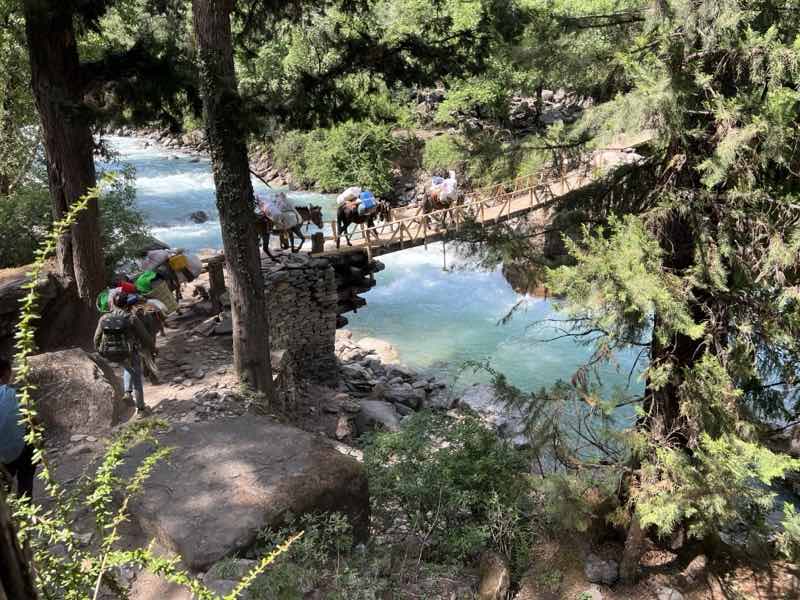
Sulighat Upper Dolpo Trek
Upper Dolpo Trekking Experience
The moment we set foot on the trails of Upper Dolpo Trek, I was plunged into a world that was as ancient as it was untouched. Every day of trekking opened new landscapes and experiences for me, kindling my sense of adventure.
The air was crisp and invigorating, with the scent of pine and the soft hum of rushing rivers. We trekked deeper into the lush forests, where the immersion in towering trees and vibrant flora contrasted with the rugged mountains that loomed at a distance.
This trek was not easy but rewarding. The morning would dawn with the chirping of birds, and the sun would rise over the peaks. We started off for the day normally after a hearty breakfast; we used to trek for six to eight hours a day.
Physical exertion used to be pretty intense; however, it was well offset by moments of sheer beauty. These included crossing high mountain passes such as Kang La and Jeng La, which was exhilarating at those elevations, with panoramic views that took my breath away.
Arriving at Phoksundo Lake was one of the most memorable moments: its turquoise water shining in the sun was just a marvelous sight. I sat down by the lake for a while, imbued with its tranquillity, and reflected on how far I had come. It reminded me why I did this: to connect with nature and feel its raw beauty.
Along the way, we passed through traditional villages that seemed to feel the pulse of life at a different pace. Interactions with the locals were the high point of my trek: their smiling faces and hospitality welcomed me into their world.
I saw daily life: women weaving wool, children playing, and farmers tending to their fields. This gave me a peek into the richness of their culture, which was deeply steeped in the Tibetan tradition.
The spiritual aspect of the trek also touched my heart profoundly. Visiting ancient monasteries, including Shey Gompa, allowed me to connect with the region’s history and spirituality. The sight of monks in prayer and their mode of living acquainted me with an added profoundness.
Apart from altitude sickness, steep ascents, and unpredictable weather, my determination to forge ahead gave me strength. Every obstacle became part of my story, shaping my character and fortitude. Besides, camaraderie among fellow trekkers provides encouragement; sharing moments around the campfire in jest, stories, and sometimes tears will make this an unforgettable experience.
The deeper we trekked into Upper Dolpo, the more indescribable freedom I felt from day-to-day life and enveloped by nature. Each sunset brought with it an orange- to pink-painted sky to remind me that each new day would bring beauty and challenge.
By the end of this trek, it hit me how this journey had made me into something I had never expected. It wasn’t just about any destination but about embracing every moment, with struggles and triumphs and everything else. Upper Dolpo had carved itself in my heart as an unforgettable adventure filled with breathtaking landscapes, rich culture, and personal growth.
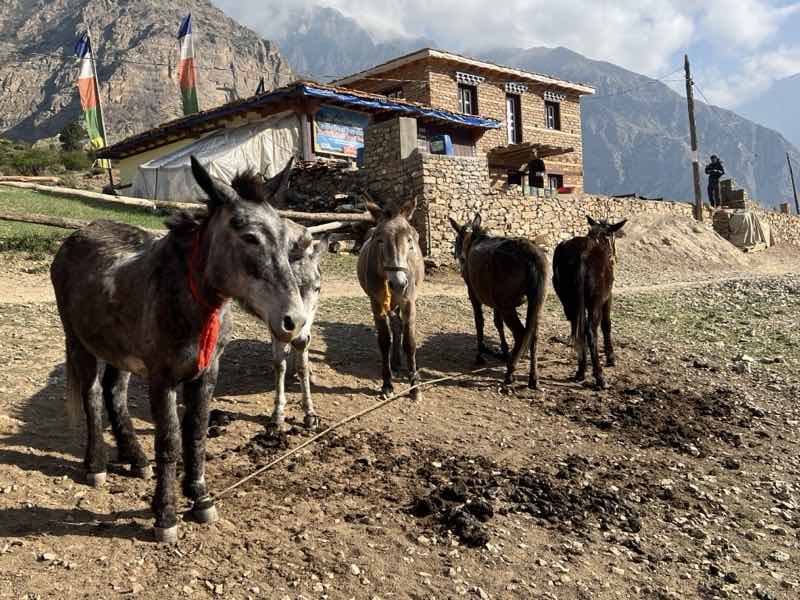
Ringmo village in Phoksundo Dolpo
People of Upper Dolpo
Dolpo people are mainly known as Dolpali, a semi-nomadic ethnic people who have protected their Tibetan culture and traditions for centuries. They have a dialect of Tibetan, spoken only in the region, which underlines the cultural identity and cohesiveness. Engrossed much with Buddhism, although many follow the syncretic form, it is mixed with the primeval Bon religion, which existed before Buddhism.
Cultural Heritage
The cultural outlook of Upper Dolpo is dominated by Tibetan habits and customs. The people of Dolpa celebrate several festivals annually, the major ones being the Phoksundo Festival and the Shey Gompa Festival, which draws both locals and pilgrims. Traditional dances, music, and rituals have always remained an important part of their cultural heritage during various festivals celebrated in this region.
Lifestyle and Economy
Most of their livelihood depends upon the agro-pastoral mode of subsistence, in which stock rearing and agriculture are engaged. Most families migrate seasonally, which means transhumance between the high-altitude grazing areas during summer and lower valleys in winter. This nomadic style of life is highly related to nature, which helps them overcome the acerbity of the region.
Spiritual Practices
Religious life is alive in Upper Dolpo, with many monasteries, or gompas, acting as study centers and congregation points for the people. Many mani walls, chortens, and prayer flags grace the area’s landscape and indicate the deeply ingrained Buddhist traditions practiced here. Locals enthusiastically participate in religious events, which are vital to their cultural behavior.
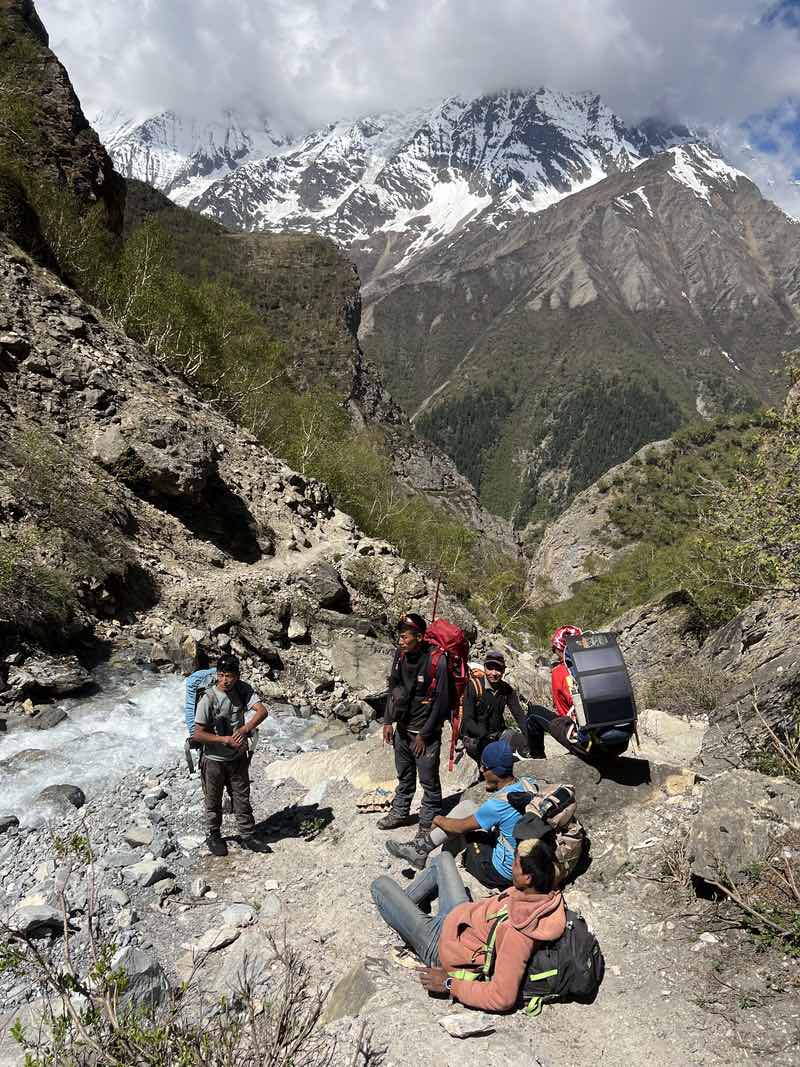
Himalayan trekkers team on the trail in Dolpo
Key Points of Upper Dolpo Trek
Phoksundo Lake
Phoksundo Lake is generally referred to as the jewel of Upper Dolpo. It is the deepest lake in Nepal and is a breathtaking sight. The water is turquoise-coloured, and high, snow-capped peaks rise from its surroundings, making a breathtakingly beautiful landscape quite otherworldly. Since it’s a holy place for the Dolpali people, capturing images of swimming or bathing in the lake is forbidden to maintain its sanctity.
This trail to the lake involves a wonderful walk through beautiful forests and rock formations, ultimately leading to a breathtaking view of the lake. One of the highest waterfalls in Nepal stands not far from here, the Phoksundo Waterfall, which falls dramatically into the lake.
Shey Gompa
Shey Gompa is more than an 800-year-old monastery situated amidst spectacular mountain scenery. It is supposed to be a religious hub for the local Buddhists and should have housed a large number of monks. It has some of the most beautiful murals and statues depicting Tibetan Buddhist art.
Therefore, a visit to Shey Gompa allows trekkers to experience the spiritual life of the people of Dolpali and provides an opportunity for reflection and contemplation. The environment is just as impressive, with panoramic views of the Himalayas commanding great serenity.
Shey Phoksundo National Park
Shey Phoksundo National Park was established in 1984. It is a UNESCO World Heritage Site because of its unusual biodiversity and remarkable topography. The park stretches across 3,555 square kilometers and houses a plethora of flora and fauna, including the snow leopard and musk deer.
The trekking route into this national park offers a variety of ecosystems, from lush green valleys to high-altitude arid landscapes. The park’s unspoiled wilderness provides a nature enthusiast with one of the most unique chances to see animals in their natural setting.
Ringmo Village
Ringmo Village is the entrance to Phoksundo Lake and has been an active manifestation of traditional Tibetan culture. Attractions here include colorful prayer flags, mani walls with carvings of Buddhist mantras, and traditional stone houses.
Interaction with the locals gives a glimpse into their daily lifestyle and customs, which are a mix of Nepalese and Tibetan influences. It is also the location of the Tshowa Monastery, a Bon monastery that is over 900 years old, which teaches visitors more about the spiritual tradition of the region.
Dho Tarap
Dho Tarap is one of the highest-inhabited villages in the world and has several cultural attractions. Mountain vistas surround this remote village, which displays traditional Tibetan architecture and lifestyle. Here, age-old customs, such as farming and animal husbandry, are maintained. Dho Tarap is a cultural hub where trekkers converse with the locals, learn about their traditions, and participate in festivals that celebrate their heritage in grand style.
Kang La Pass
Standing tall at 5,151 meters, Kang La Pass is one of those thrilling passes to cross while on a trek. Every step upwards towards the top is well rewarded with grand panoramic views of peaks and valleys in every direction. Standing at this elevation provides a deep sense of accomplishment and feels connected with nature. Upon descending into Kang La, the trekker continuously goes down through diverse landscapes to mesmerize the senses.

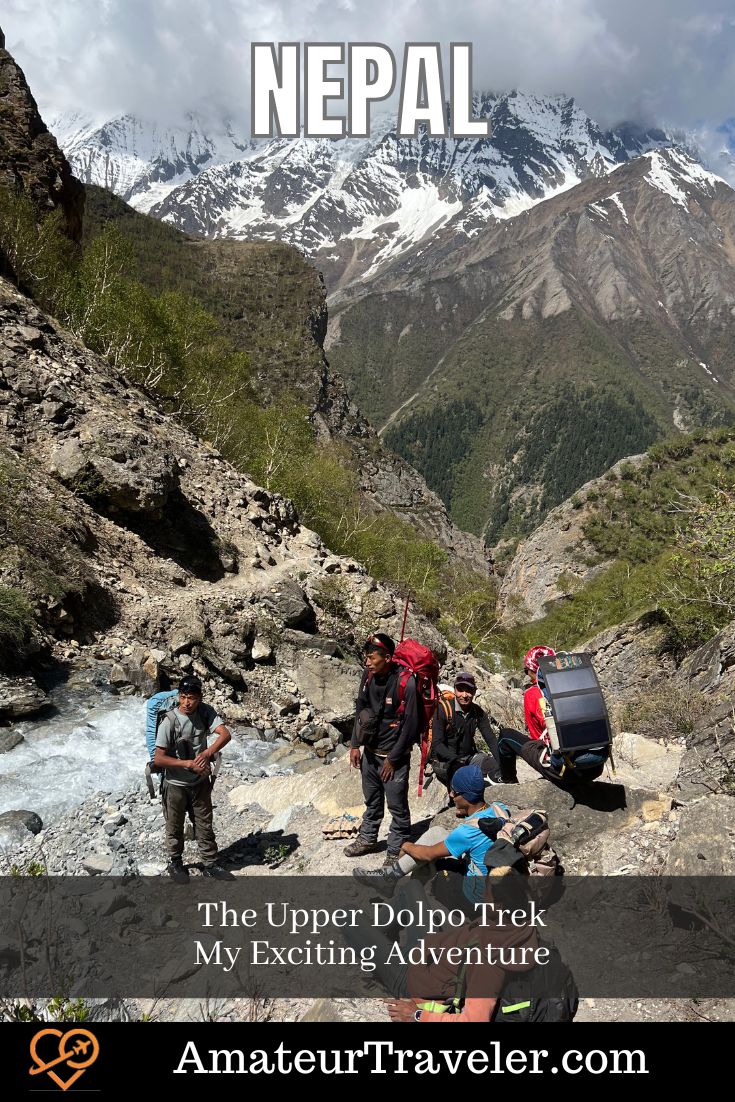
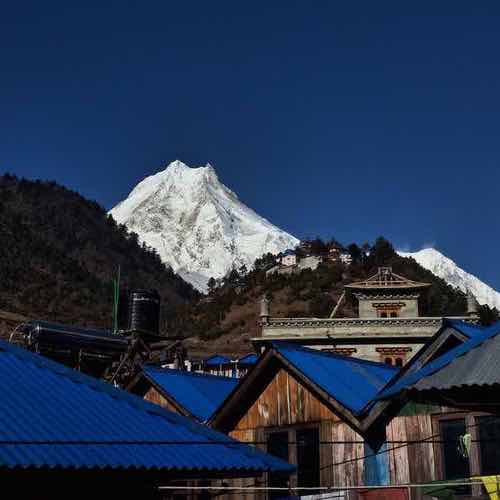 Planning for the Manaslu Circuit Trek in Nepal
Planning for the Manaslu Circuit Trek in Nepal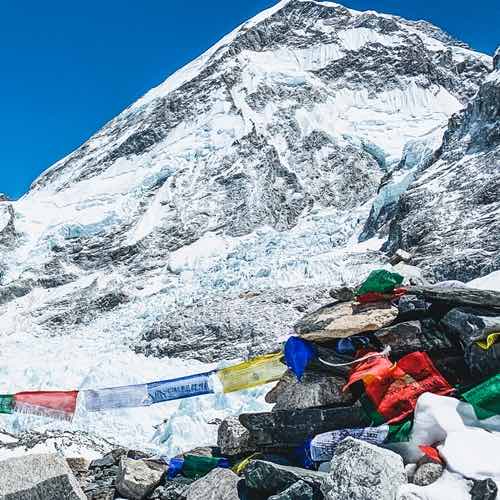 Everest Base Camp Trek: A Journey to the Roof of the World in Nepal
Everest Base Camp Trek: A Journey to the Roof of the World in Nepal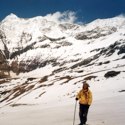 Roopkund Trek: My Himalayan Death Trek – India
Roopkund Trek: My Himalayan Death Trek – India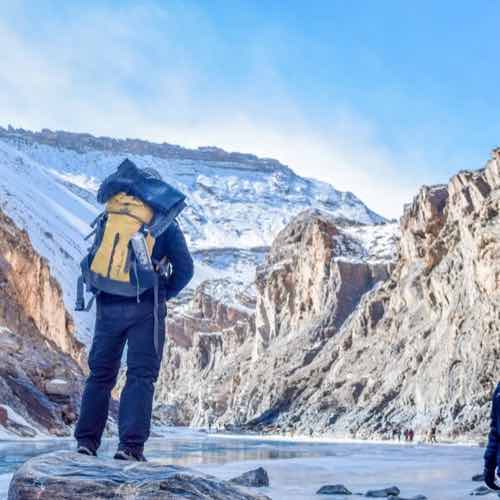 A First-Timer’s Guide to the Chadar Trek in Ladakh India
A First-Timer’s Guide to the Chadar Trek in Ladakh India
